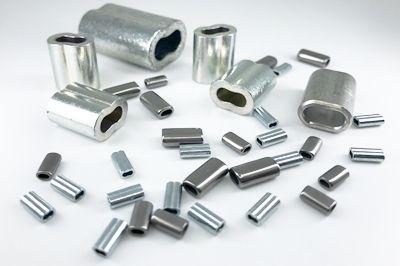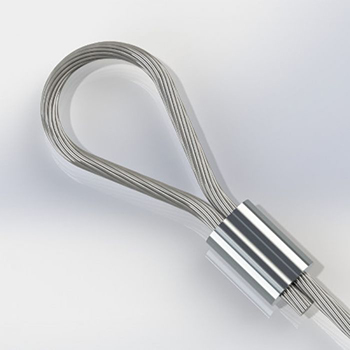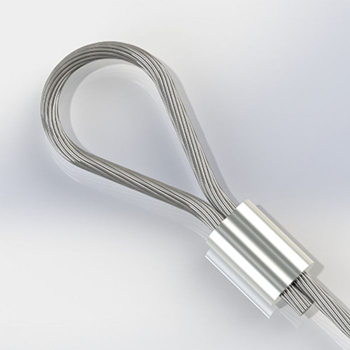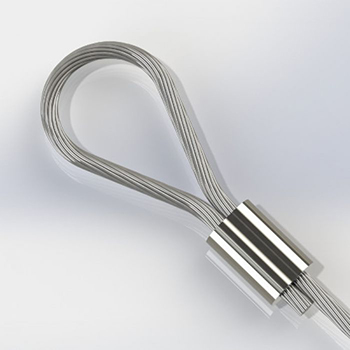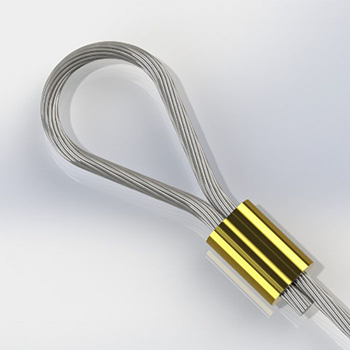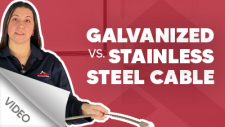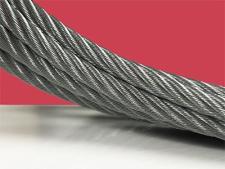When using mechanical cable ferrules, more commonly known as crimp sleeves or even less often, loops sleeves, how the fitting is applied to the cable depends upon the use case. For example, one can apply a ferrule or again, crimp sleeve, using an industrial press, which applies predefined forces to the fitting, effectively pressing the fitting onto the cable or wire rope. Applying crimp fittings using this method assures, among many things, that the cable fitting dependably supports the required load, across the required quantity of cycles. The reliability of an industrial press not only assures the assembly meets its factor of safety, but even more importantly, that the millionth part removed from the press possesses the same quality and dependability as the first.
Another method of applying ferrules sleeves to a length of wire rope or miniature mechanical cable is to use a hand tool, such as Sava’s T185 Compound Crimping Tool. The advantages to this approach, like using an industrial press, are many, but chief among them the ease with which one can quickly produce prototype parts for testing and proving design concepts.
Although the two methods of applying crimp fittings to a length of cable appear functionally comparable, one will produce a more cosmetically appealing appearance, while the other a cruder, more inconsistent aesthetic look and feel.
No matter the approach, as mentioned, there are many advantages and conversely, disadvantages to each. So, let’s unpack both crimping methods fully.
Explore Sava's Entire Line of Cable Ferrule Fittings
Turn to Sava to ensure you achieve the performance demands of your products
What is a Ferrule or Crimp Sleeve?
Ferrules, which again are known as crimp sleeves, are metal cable fittings that form terminations on a length of mechanical cable. Aptly named a “sleeve,” cable ferrules are hollow in the center, which allows the cable to pass into or through the fitting, and possess geometries that range from figure-8, to ovular, to cylindrical. Typically, cable crimp sleeves are used to create a loop in the cable, which would make a figure-8-shaped cable ferrule ideal for such an application. But, almost as often, cable ferrules are used to join two lengths of cable together. While there are many common uses for crimp sleeves, the two aforementioned are by far the most common.
From What materials are Cable Ferrules Produced
Crimp sleeves are produced using aluminum, zinc-plated copper, stainless steel and brass. Naturally, the material best suited to the application or motion system is determined case-by-case.
ALUMINUM CABLE FERRULES
Aluminum cable ferrules are lightweight, cost-effective, and corrosion-resistant. These chemical characteristics make aluminum cable crimp sleeves ideal in applications where moisture, condensation, and humidity may be present in the environment. Maritime or marine applications are optimal surroundings for these cable ferrules because they demonstrate a long, lasting impermeability to the water vapors that would otherwise corrode, penetrate, and ultimately damage cable crimp sleeves made from brass, stainless steel, and copper.
ZINC-PLATED COPPER FERRULES
Like aluminum cable crimps, zinc-plated copper ferrules are also malleable and affordable too. However, though the zinc plating provides a galvanization, or protective layer for the copper, the zinc coating is thinly applied, and wouldn’t take much more than the strength of one’s hand, applied to a hand tool, to remove that critical layer of protection from the fitting. Once the zinc has been removed, partially, or even merely microscopically, the cable ferrule has been compromised, thus exposing the entire mechanical cable assembly to failure in the field.
Nevertheless, zinc-plated copper cable ferrules provide practical, but not superior, protection in use cases where oxidization may be present. Where zinc-plated copper cable crimps shine is in its economic and base reliability features. The proverbial workhorse of cable ferrules, cable crimps produced using zinc-plated copper are found in both MedTech as well as industrial applications, due to their affordability and durability.
STAINLESS STEEL CABLE FERRULES
Due to its resistance to hostile environments and its exceptional strength, stainless steel cable ferrules are arguably the best cable crimp sleeves available. Far more expensive however, these resilient, long-lasting cable crimp sleeve fittings are most often used in systems where the extra cost is a fair tradeoff where corrosion and hostile conditions exist. Take, for instance, aerospace or other potentially outdoor applications. In any outside environment, temperatures and air quality inform the choices made about mechanical cable materials, including cable ferrule fittings. While rainwater does not do harm to stainless steel, the presence of seawater does tremendous damage to the crimp sleeve’s material, putting the entire system at risk for failure. Because stainless steel, however, is the hardest material of the available cable crimp sleeves, using hand tools is not as simple a proposition. For example, using too small a hand pressing tool, like the T185 mentioned earlier, may result in damaging the tool, as well as the fitting itself. But far worse than the consequences on the tools and cable assembly components, stainless steel cable ferrules may not form to the cable properly, meaning the entire assembly could fail to support the required load, radii or all of the above.
BRASS CABLE FERRULES
Unlike its stainless steel and zinc-plated counterparts, brass cable crimp sleeves will oxidize immediately upon coming in contact with moisture. Even in the air, vapor particles will introduce the patina process to brass, dullening the materials factory shine and attractive cosmetic appearance. However, like copper, brass cable ferrules are also pliable, making this fitting material easy to work with, either with an industrial press or hand tools. Oftentimes, brass cable crimp sleeves are used in small to miniature mechanical cable assemblies, as a cost-effective, less elegant alternative to stainless steel cable ferrules. And though stainless steel cable fittings possess exceptional resistance to corrosion in wet conditions, brass, no matter the fitting’s diameter, will quickly exhibit verdigris coloring as the material remains exposed to even the slightest degrees of humidity.
Using a Hand Tool to Press Cable Ferrules to Wire Rope
The first step in properly using a hand tool to apply a ferrule to a length of cable is selecting a cable compatible with the crimp sleeve the application requires.
Pairing an incorrect cable with incompatible crimp sleeves means mating components are not making sufficient contact with one another, which will result in failure of the cable assembly. Because wire rope and mechanical cable are stranded in a helical geometry, spaces between the stranded wires exist as a manufacturing operation. Applying mismatched cable ferrules to helically stranded cable means the fitting is coming in critical contact with a portion, but never all, of the cable itself.
Using incompatible cable and cable crimp sleeves may mean the fitting made less than sufficient contact with the available surface area provided by the cable. Too small a crimp fitting for example, and one may force the cable into a thru-hole that is inadequate for the cable’s larger diameter. In this scenario, damage could occur to the wires in the cable as it is forced into a space not suited to it. On the contrary, a cable ferrule with too large a thru-hole may result in crushing the fitting into the shape sought. This scenario commonly results in cracking the cable ferrule fitting, or in some other way comprising the required integrity of the cable assembly. Even if the cable crimp sleeve and cable combine to make what appears to be a sound mating union, testing must be done to ensure the cable’s individual wires, as well as the fittings, have not been damaged, split, severed, or experienced any other undesirable outcome.
Fittings Incompatible with Hand Tools
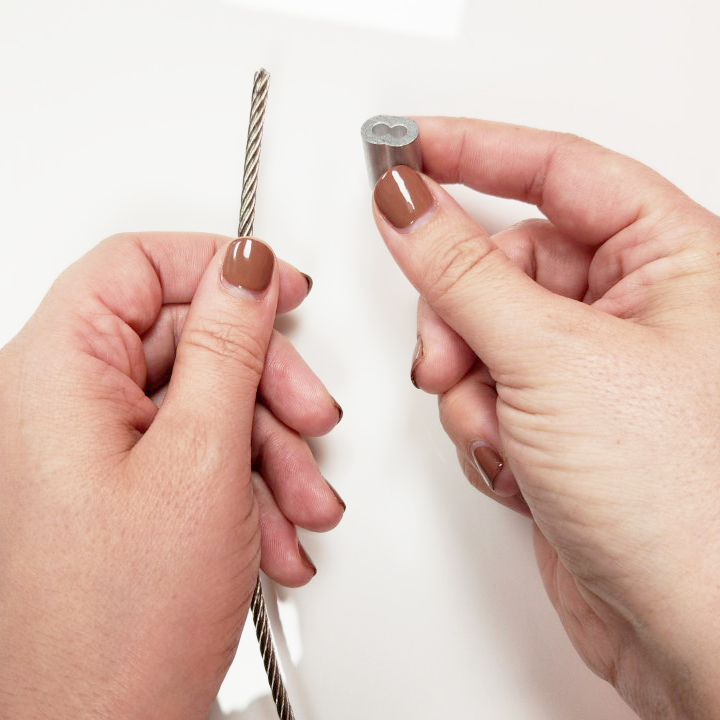

When applying stainless steel cable ferrules, as mentioned, some hand tools may struggle to achieve the strength the cable assembly requires. This is largely due to the size of the hand tool, the amount of force that can be applied, and the hardness of the stainless steel fitting. If the tool is too small for larger stainless steel crimp sleeves, the force one’s hand can generate may simply be inadequate to produce an optimally functioning cable assembly.
For this reason, it is important to know when hand tools are no longer suited to the application.
An important tip to remember is that, although hand crimping tools are outfitted with various cavities for the cable fitting to nest within, the mating components should insert effortlessly into a vacant cavity. Forcing a cable ferrule into an improper cavity may also result in a cable assembly that does not yield the cable assembly’s best possible breaking strength.
MANUALLY PRESSING A FERRULE TO CABLE IN LOOPING CONFIGURATIONS
STEP 1
A rather simple manual manufacturing operation, here are the step-by-step instructions for applying a cable ferrule or cable crimp sleeve to a length of mechanical cable.
Insert the length of cable into one side of the ferrule’s thru hole. This operation alone is made easier in cable crimp sleeves that are figure-8 shaped because the center of the “8” separates the thru hole effectively into two distinct slots. This figure-8 shape allows for a simpler time feeding the cable into one side of the opening in the cable ferrule without it falling into the space that will be allocated for the return of the cable. Be sure to initially feed enough cable through the thru hole to allow the cable to return through the remaining vacancy in the fitting.
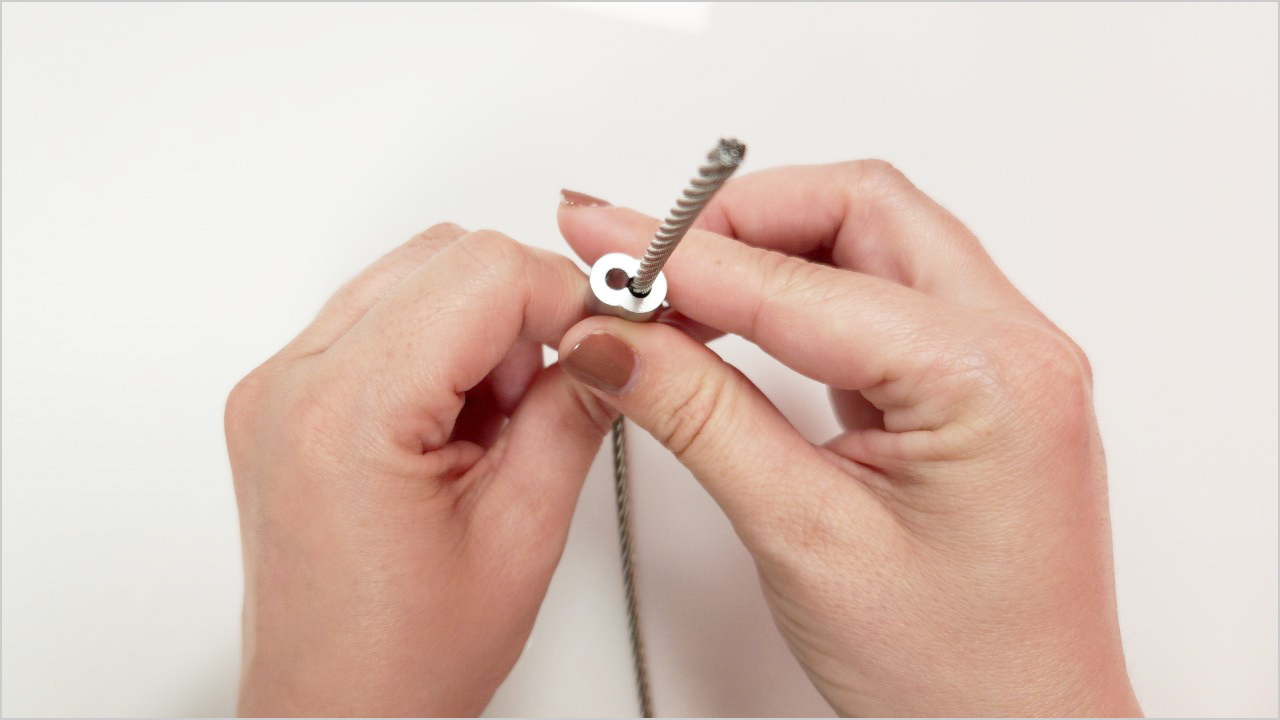

STEP 2
Being mindful that mechanically cut cable may deform or fray the wires, carefully insert the pulled-thru cable back into the remaining thru hole to form a loop.
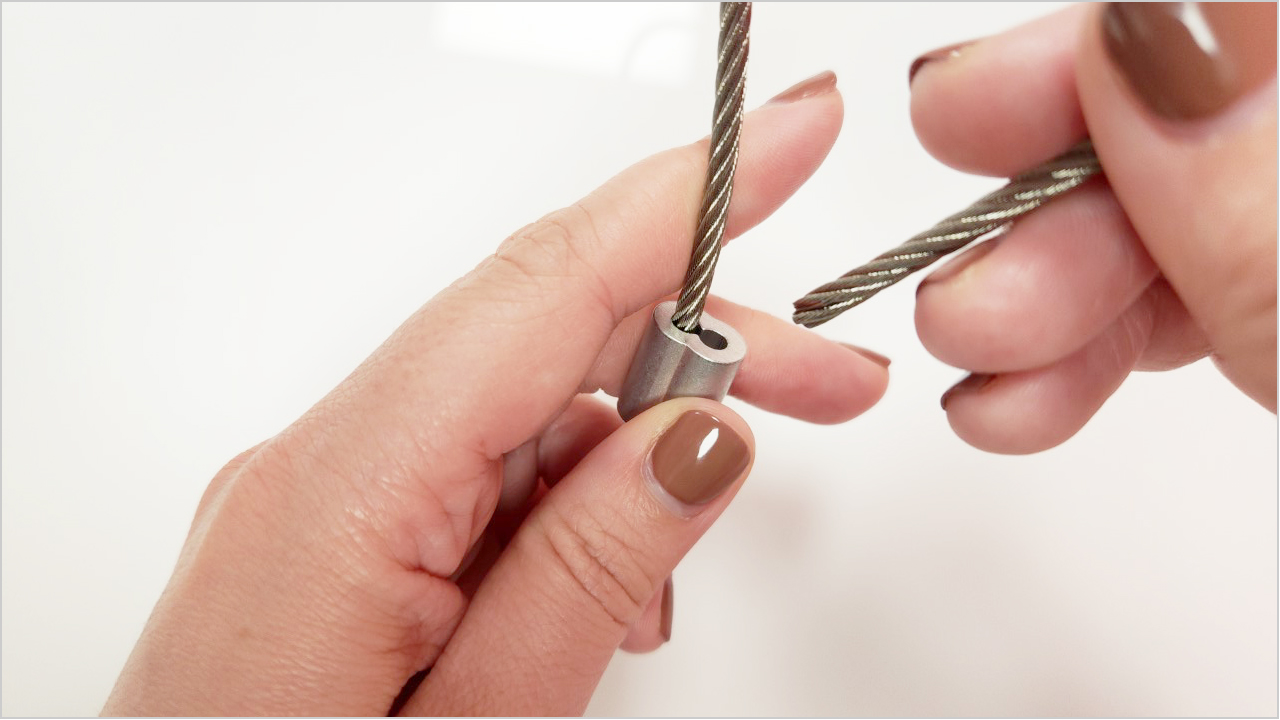

STEP 3
With a loop slackly assembled, one can now size the loop to the drawing’s requirements by pushing or pulling on the long end of the cable until the desired loop size is achieved. It is recommended that a small amount of cable protrudes out of the completed end of the loop to ensure that when pressed, the cable’s wires naturally expand outside the cable ferrule. This “tail” provides additional strength to the assembly.
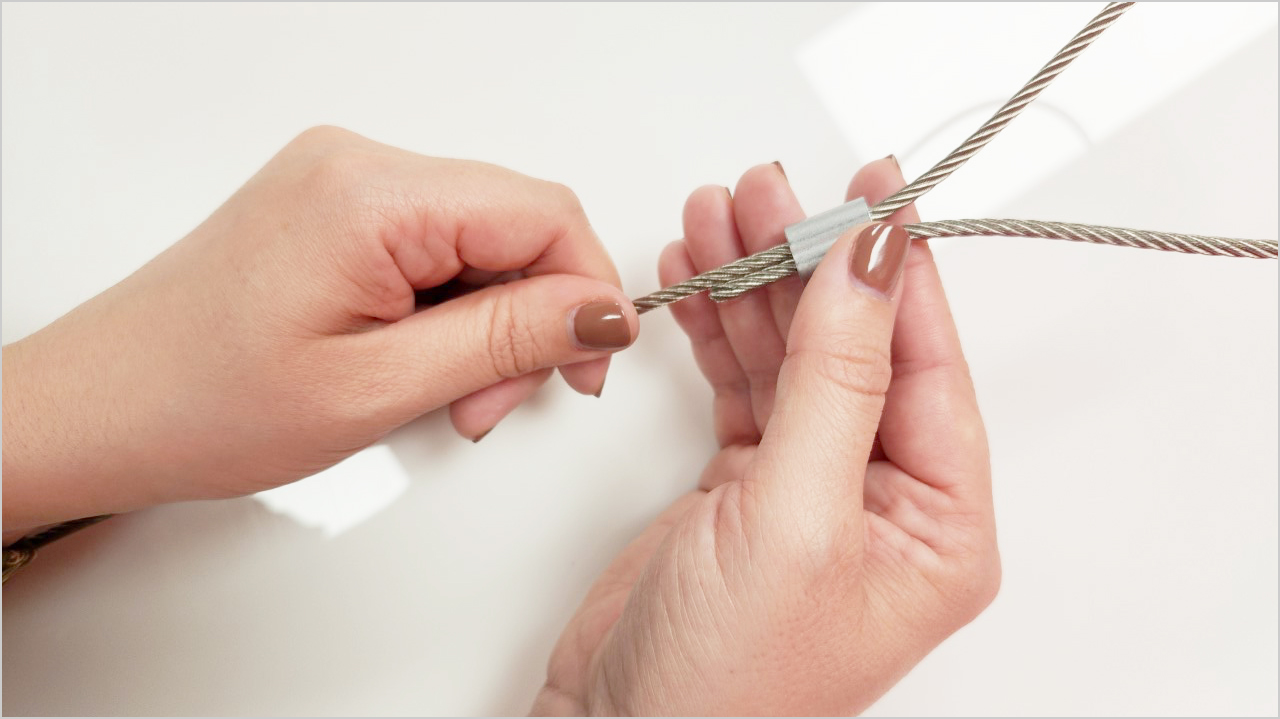

STEP 4
Once the loop size and the tail are set to their proper size and length, crimping the fitting to the cable takes place.
To do this, one inserts the cable ferrule fitting into the compatible, vacant cavity of the tool itself. In some cases, the geometry of the cable ferrule informs how to insert the fitting into the vacant cavity. In figure-8 cable crimp sleeves, for instance, the fitting is turned laterally on its side, so that the left and right sides the fitting, and loop, are making direct contact with the walls of the cavity. This configuration assures that each side of the assembly’s loop are pressed within the tool. Tilting the figure-8 cable ferrule flat inside the cavity would mean the ferrule is not oriented sounding in the space allocated, and forces applied to the pressing operation would not sufficiently compress the loop to the fitting.
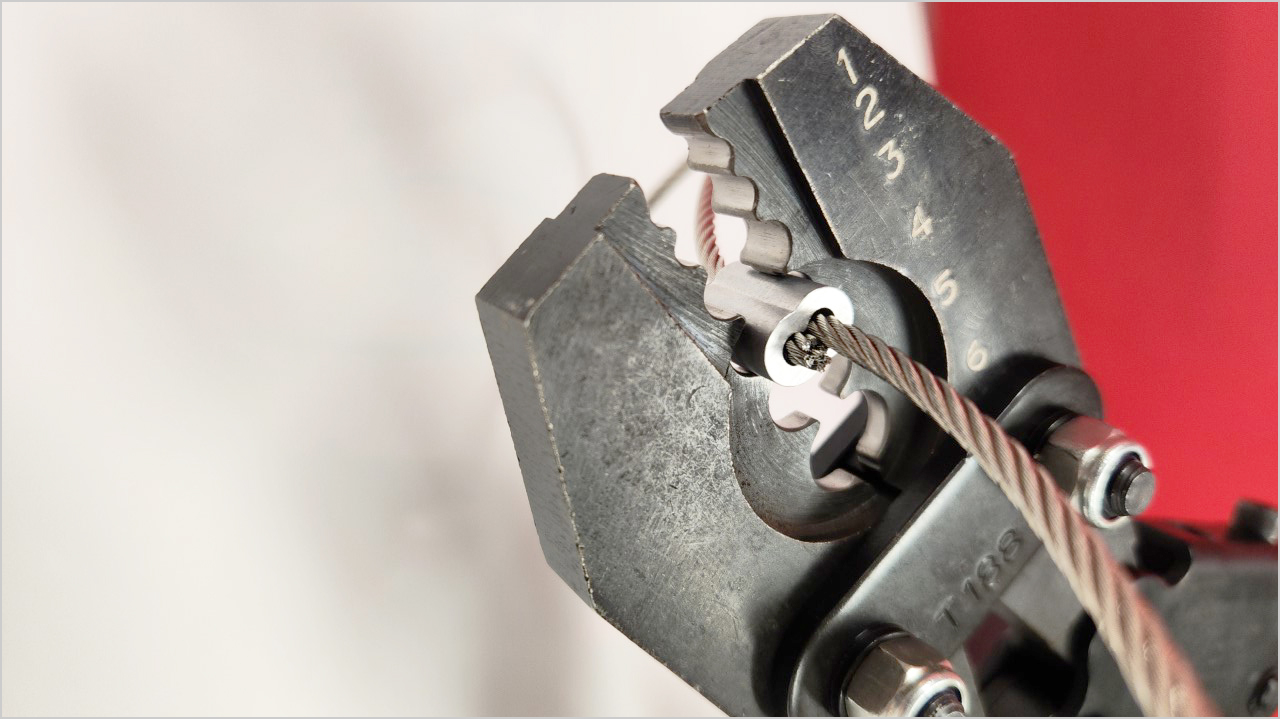

STEP 5
With the cable crimp sleeve seated snuggly in the cavity, the operator firmly grasps both ends of the hand tool and applies manual force to close the head of the cavity. This operation should be repeated along the entire length of the cable ferrule fitting, until the entire fitting is formed to its new, mated geometry.
In Sava’s T188 hand crimping tool, the larger of the two available, the tool comes with a “go-gauge,” which is a small hand measuring tool that helps the operator validate this manual manufacturing operation. What’s more, pull tests should be undertaken to ensure the required factor of safety has been met, one assembled cable part to the next.
IN LAP SPLICING CONFIGURATIONS
Lap splicing is essentially the pairing of two separate lengths of cable by a ferrule sleeve. This “lapping” operation is achieved when each of the two lengths of cable are overlapping one another using a cable crimp sleeve fitting. In this manufacturing operation, commonly more than one cable ferrules is used in this configuration to ensure sufficient strength is achieved at the joining point.
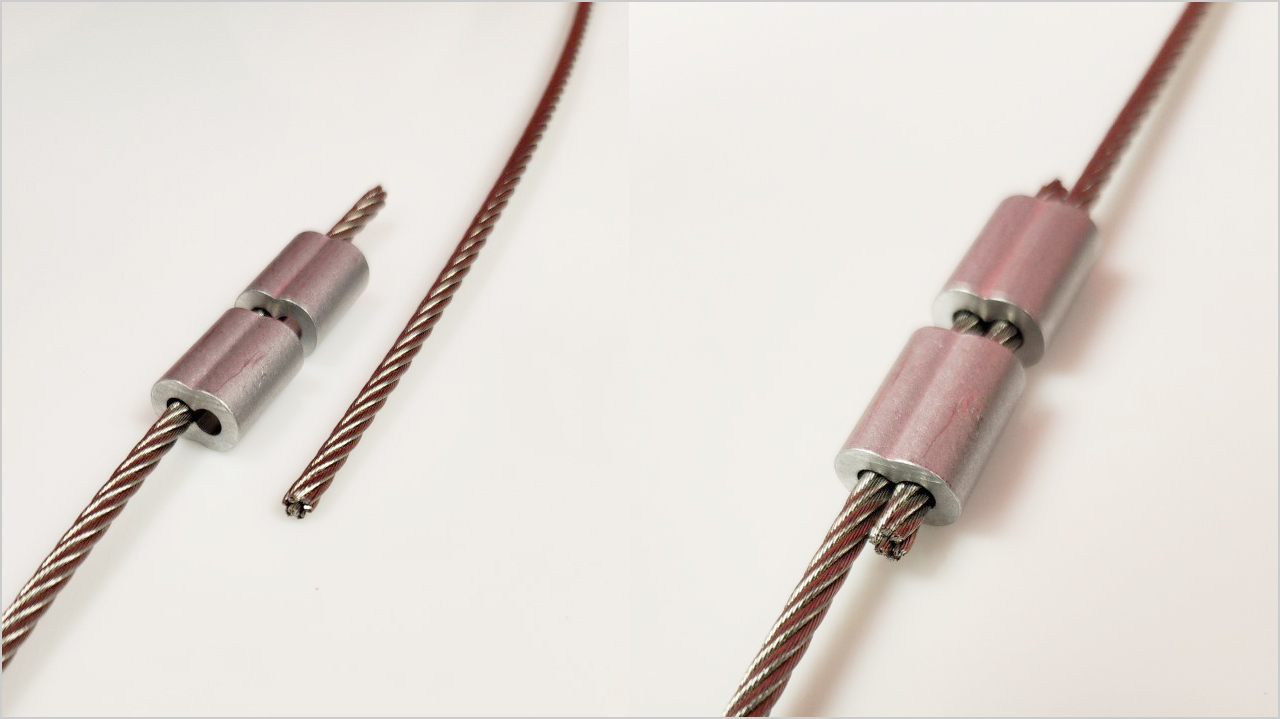

Similar to loop configurations, inasmuch as one is feeding the cable into the thru hole of the cable ferrule, in this configuration, one feeds the cable through two or more ferules in each direction, thus pairing two separate lengths of cable from opposite directions. It is important to leave a small space between the two or more cable crimp sleeve fittings because as the pressing operation is executed, the ferrules naturally undergo elongation. Omitting the space necessary to allow for fitting to slightly expand means the ferrules may collide with one another, potentially compromising strength and flexibility.
Providing one accounts for these unique application considerations, one can proceed by simply referring to the previous five-step process to complete the manual pressing operation.
Consult an Expert for your Cable Ferrule Requirements
An industrial press is always a surer way to promise a mechanical cable assembly performs as expected in the field. And while production runs of significant quantity and scope almost always call for a quick and reliable mechanized manufacturing operation, a hand tool is a fine substitute where testing is underway, or the stakes are lower.
But no matter the operation used to press a cable crimp sleeve to a wire rope, executing this seemingly simple, yet sophisticated manufacturing step is one that is peppered with potential sources of failure.
Be sure to consult qualified mechanical engineers when examining the approach to pressing cable ferrules to a length of cable. Talk to the engineers at Sava. Our experts possess over 50 years of experience producing mechanical cable assemblies that use all varieties of cable crimp sleeves and ferrules.

